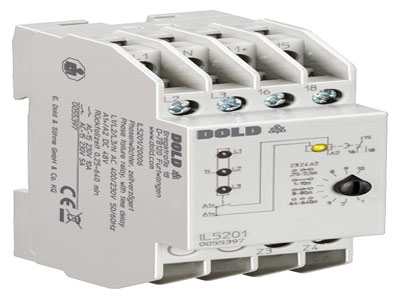Key Takeaway
Relays fail due to several reasons. Common causes include poor contact alignment, open coils, and improper relay selection for the application. Poor design practices in circuits also contribute to relay failure. Overloading, high temperatures, and environmental factors like dust and moisture can further damage relays. Ensuring proper installation, regular maintenance, and choosing the correct relay type for your specific needs can improve reliability and reduce the risk of failure. Proper handling and care are essential for the longevity and efficient performance of relays.
Electrical Overload
Electrical overload is one of the most common causes of relay failure. When a relay is subjected to currents higher than its rated capacity, it can overheat. This overheating can cause the relay contacts to weld together, making it impossible for the relay to open or close properly. For instance, in industrial applications where large motors or heavy machinery are involved, the initial inrush current can be significantly higher than the relay’s rated current. If not properly accounted for, this can lead to frequent overloads and eventual failure. To prevent this, always ensure that the relay’s current rating is appropriately matched to the application and consider using relays with higher current ratings or additional protective devices.

Mechanical Fatigue
Mechanical fatigue is another significant cause of relay failure. Relays consist of moving parts that can wear out over time, especially with frequent use. Each time a relay switches, its contacts open and close, leading to mechanical wear and tear. This wear can cause the contacts to become misaligned or develop higher resistance, ultimately leading to failure. For example, in high-use applications like automated production lines, relays may be required to switch thousands of times per day. This constant activity can quickly wear down the mechanical components.
To mitigate mechanical fatigue, use relays rated for high switching cycles. These relays are designed to handle frequent operations without significant wear. Additionally, consider implementing regular maintenance and inspections. Regular checks can identify early signs of mechanical wear, allowing for timely replacements before failures occur. This proactive approach helps maintain system reliability and efficiency, reducing the risk of unexpected downtime. By understanding and addressing mechanical fatigue, engineers can enhance the longevity and performance of their relay-based systems, ensuring they operate smoothly even in demanding applications.
Environmental Stress
Environmental stress, such as extreme temperatures, humidity, and dust, can also cause relays to fail. High temperatures can cause thermal expansion, leading to misalignment of the relay contacts and reduced efficiency. For instance, if a relay operates in an environment hotter than its design specifications, the materials can expand and contract, causing the parts to misalign over time. Humidity and condensation can result in corrosion of the relay contacts, impairing their function. Corroded contacts increase resistance, which can lead to overheating and eventual failure. Dust and other contaminants can obstruct the movement of relay parts, causing mechanical failures.
In outdoor installations or harsh industrial environments, relays are often exposed to such adverse conditions. To protect relays from environmental stress, use enclosures that provide adequate protection against dust and moisture. Ensure that the operating environment remains within the relay’s specified temperature range. Protective enclosures and proper environmental controls are crucial in preventing these stresses from affecting relay performance. By taking these precautions, engineers can ensure that relays remain functional and reliable, even in challenging conditions, thus enhancing the overall resilience of the electrical system.
Poor Quality Components
Using poor quality components is a significant factor that can lead to relay failure. Relays manufactured with substandard materials or lacking in rigorous quality control are more prone to malfunction and premature failure. For example, contacts made of inferior materials can wear out faster, resulting in unreliable operation. Similarly, poorly constructed coils may fail to generate the necessary magnetic field, causing the relay to operate inconsistently or not at all. These deficiencies can lead to shortened relay lifespans and increased maintenance costs.
To avoid these issues, always choose relays from reputable manufacturers known for their quality and reliability. Look for certifications and industry standards that validate the relay’s performance and durability. Reading reviews and testimonials from other users can also provide insights into the reliability of different relay brands and models. Ensuring that the relays you select meet the required specifications and standards for your specific applications can significantly enhance the overall reliability and longevity of your electrical systems.
Improper Usage
Improper usage is a broad category encompassing incorrect installation, inappropriate relay selection, and general misuse. For example, using a relay in an application for which it is not designed, such as deploying a low-current relay in a high-current application, can lead to premature failure. Incorrect installation practices, like improper wiring or inadequate mounting, can also cause relays to fail. These mistakes can result in poor electrical connections, physical stress on the relay components, and ultimately, system failures.
To prevent failures due to improper usage, ensure that the relay is correctly installed and is appropriate for the specific application. Follow the manufacturer’s guidelines and specifications closely, which include detailed instructions on proper installation and operational limits. Providing proper training for personnel responsible for installing and maintaining relays is also crucial. This training should cover best practices for installation, operation, and troubleshooting, ensuring that all team members understand how to handle relays correctly. By adhering to these guidelines, you can significantly reduce the risk of relay failures and maintain the efficiency and reliability of your systems.
Conclusion
Preventing relay failures involves understanding and addressing the various factors that can lead to their breakdown. By selecting the right relays for your application, ensuring proper installation, using high-quality components, and protecting against environmental stress, you can significantly enhance the reliability and lifespan of your relays. Regular maintenance and inspection are also crucial to identify potential issues before they lead to failure. For newly joined engineers, mastering these practices is essential to maintaining robust and reliable electrical systems. By implementing these strategies, you can minimize downtime and ensure the efficient operation of your systems.
